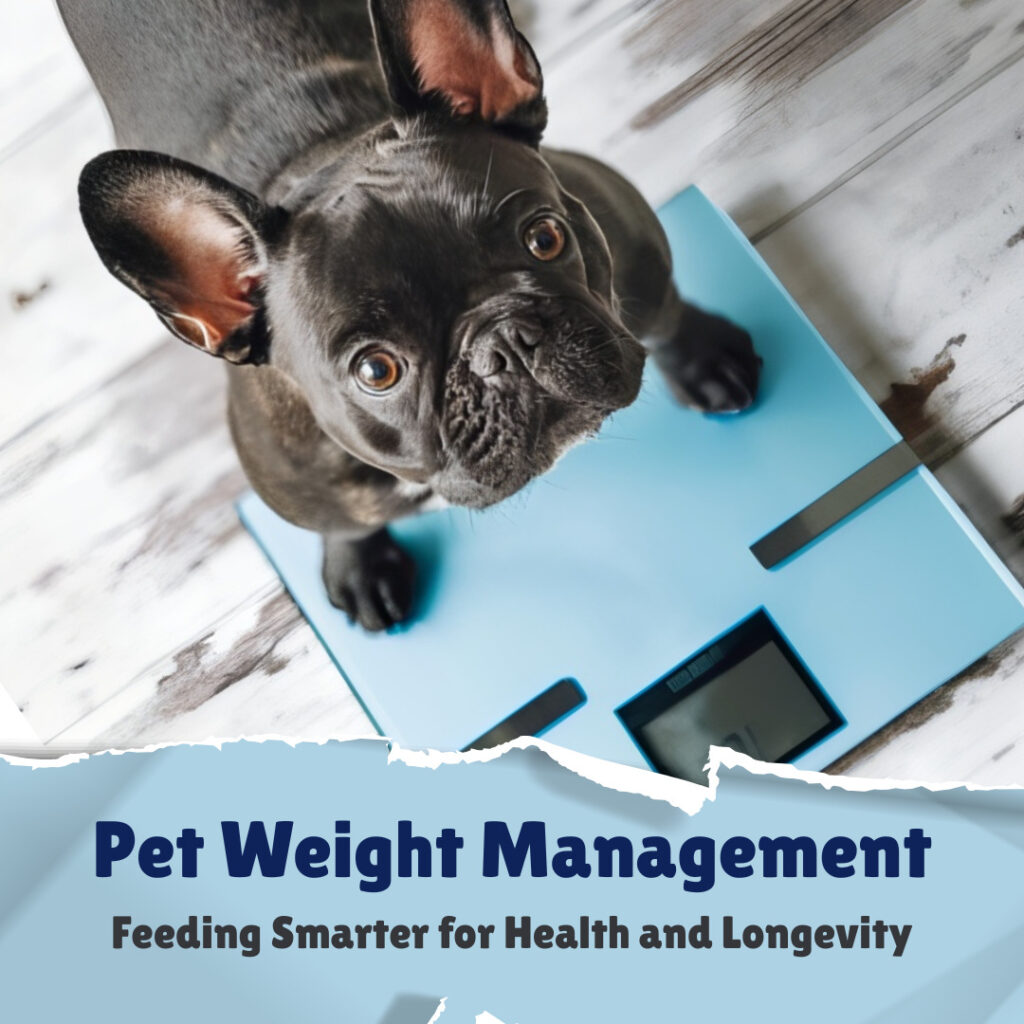Obesity is no longer only a human health problem; it’s also a growing problem for our pets. Like humans, pets are increasingly leading sedentary lifestyles while consuming excess calories. As responsible pet owners, we need to take a second look at the way we feed them and make choices to facilitate their health and well-being for years to come.
Pet Weight Management: Feeding Smarter for Health and Longevity
Obesity is no longer only a human health problem; it’s also a growing problem for our pets. Like humans, pets are increasingly leading sedentary lifestyles while consuming excess calories. As responsible pet owners, we need to take a second look at the way we feed them and make choices to facilitate their health and well-being for years to come.
The Human-Pet Obesity Parallel
In the U.S., the Centers for Disease Control and Prevention (CDC) reports 20% of adults in the U.S. are considered obese, with some locales reporting greater than 35%. According to the Association for Pet Obesity Prevention (2023), 57.6% of cats and dogs are overweight or obese. Strikingly, 28% and 17% of cat and dog owners acknowledged their pets “may” be overweight. Many pets are viewed by their parents as merely “a little chubby” and are unaware of the possible health consequences until it’s too late to fix anything.
How Are Pets Getting Overfed?
The issue is not simply just what they’re eating in the bowl, but what is outside of that bowl. Studies have shown that 30–50% of a pets daily caloric intake may come from treats, table scraps, and supplements, which can lead to unbalanced nutrition. Just to clarify, even when you feed your pet a food that has “complete and balanced” on the label, the extra calories will create the imbalance.
People can take years to develop health issues because of their size (if at all); however, pets do not have that luxury. Pets have short lifespans and poor feeding patterns cause health problems a lot quicker since we add genetic factors into the mix.
What Counts as Overweight or Obese?
A veterinarian would typically define “overweight” as 10–20% more than a pet’s ideal weight, and “obese” as 30% more. For example, if a Golden Retriever typically weighs 75 lbs., that will make the pet overweight at 90 lbs., and potentially obese if it surpassed that weight.
The Purina Lifespan Study showed that maintaining lean body condition can lead to a dog living 15% longer, which is almost two extra years. The Waltham Petcare Science Institute also found that overweight dogs have a significantly increased risk of dying prematurely compared to dogs in normal body conditions.
Who Is Responsible?
In the end, the pet owner is responsible for the following:
- Check with your vet to know your pet’s ideal weight.
- Know your pet’s calorie needs, which are based on breed, age, activities, and so on
- Know when to adjust quantity of feeding amounts based on lifestyle changes or health conditions
- Be aware of the treats and extras you provide (they should be an amount less than 10% of total calories for the day)

The Importance of Packaging and Calorie Labels
Since 2014, in the United States, pet food brands need to state calories/kg and calories serving on packaging, based on AAFCO (Association of American Feed Control Officials) and their guidelines. But providing that info is not enough—many pets parent do not know how to use it. A Canadian study from 2019 showed some level of mis-measured kibble portions by pet owners, of roughly ±150%, depending on measuring tool. That is a huge margin for error, and a big reason why many pets are unintentionally overfed.
Theresa Lantz, companion animal nutritionist explained:
A Real-World Example: Calories Add Up Fast
Let’s assume a pet parent provides three 50 calorie treats per day. Just 150 extra calories daily add up to 54,750 calories a year. If we only assume the pet is digesting 80% of that extra, there’s still the equivalent of over 43,800 calories stored, which could convert to a rise in fat of almost 11 pounds with no exercise to offset it.
Now consider when the pet parent also provides extra table food, chews, or high-fat supplements, and doesn’t adjust the regular food.
Confusion Across Pet Food Products
Unfortunately for consumers, this problem with calorie targets is compounded by an absence of consistency across the pet food market, even with the labeling data:
-
- For a 50-pound dog, dry food calorie targets can vary across brands from 894 to 1,242 kcal/day
- Canned food variations can vary more widely and contain more fat-derived calories
- Some brands even breakdown RDF, presenting calorie data for their products incorrectly (e.g. using dry matter basis), being contrary to AAFCO rules.
The presence of the labeling system can make it difficult for dedicated pet owners to make reasonable comparisons or feeding decisions—particularly when switching between product types.
What Can We Do?
Below are a few practical ways that we can work to minimise confusion and improve feeding accuracy:
- Brands should include overall recommended calorie targets across the entire product line (dry, wet, treats)
- Feeding calculators, or QR clause for easier, personalised adjustments should be included on packaging
- Brands should include instruction for using all edible products together (base food + treats + supplements)
- Educational support – on pack or via online resources – should help owners understand how the age, spay/neuter status, climate and activity level impact caloric needs
Final Thoughts
Managing your pet’s weight is not only about reducing food; it is about intent when feeding. Each extra treat, table scrap, or topper counts. If owners are not intentional and aware, well-meaning pet parents can unknowingly be impeding their pets’ chances for a long life and risk developing chronic disease.
Better tools, more clear labelling, and consistency in brand guidance would allow owners to be more informed and considerate when choosing products, and in turn allow their pets to live longer, healthier lives.
Are you looking for help developing pet food products that support weight management and longevity?
Our team can help with formulation, calorie balancing, claim support, and regulatory support for your next product development.

Let’s create something Innovative and Delicious together
Food Research Lab strives for excellence in new Food, Beverage and Nutraceutical Product Research and Development by offering cutting edge scientific analysis and expertise.




